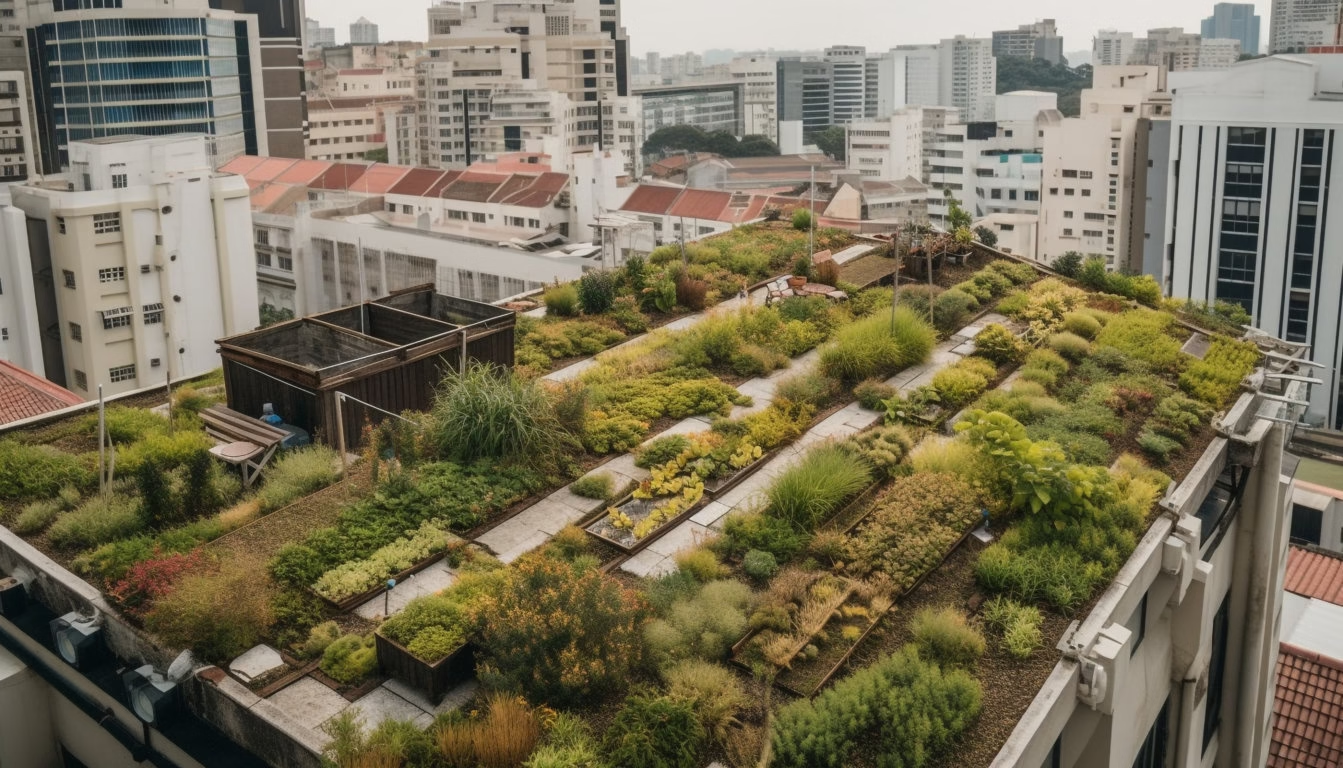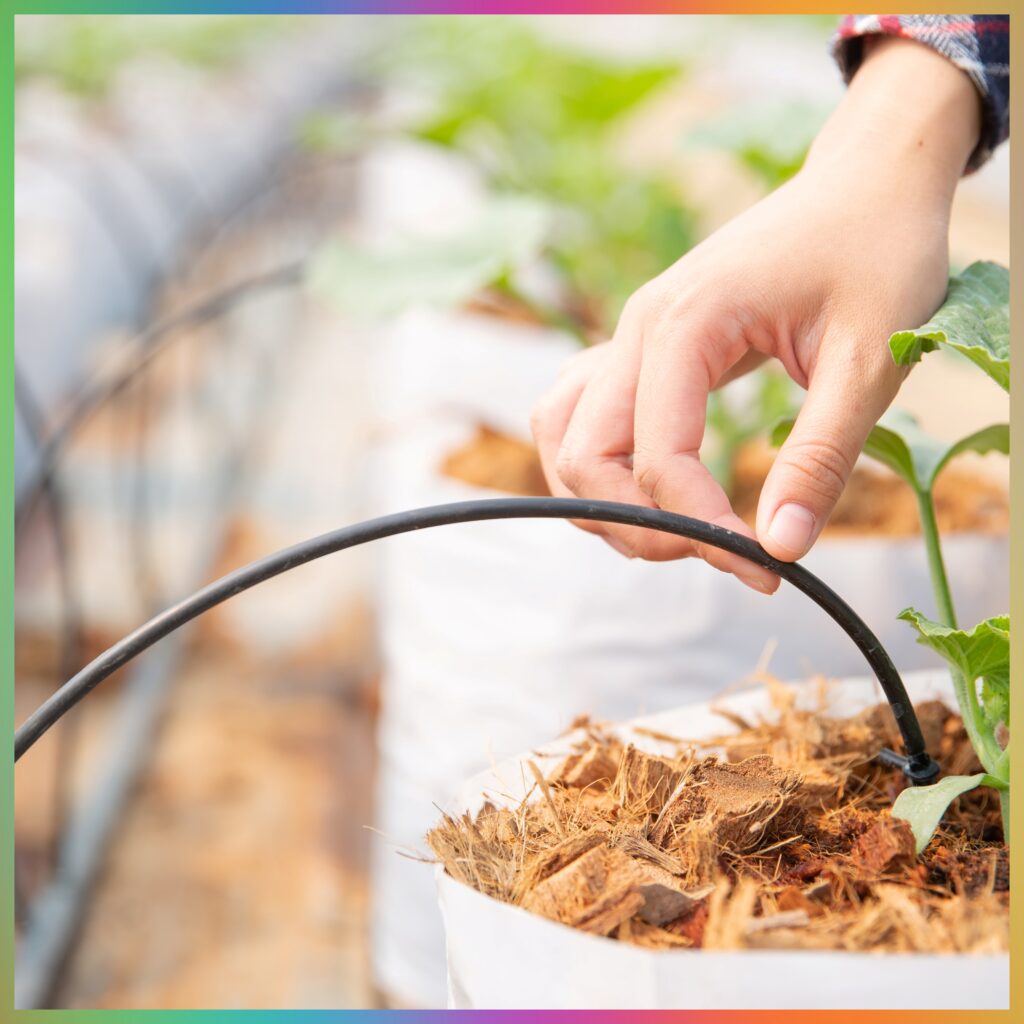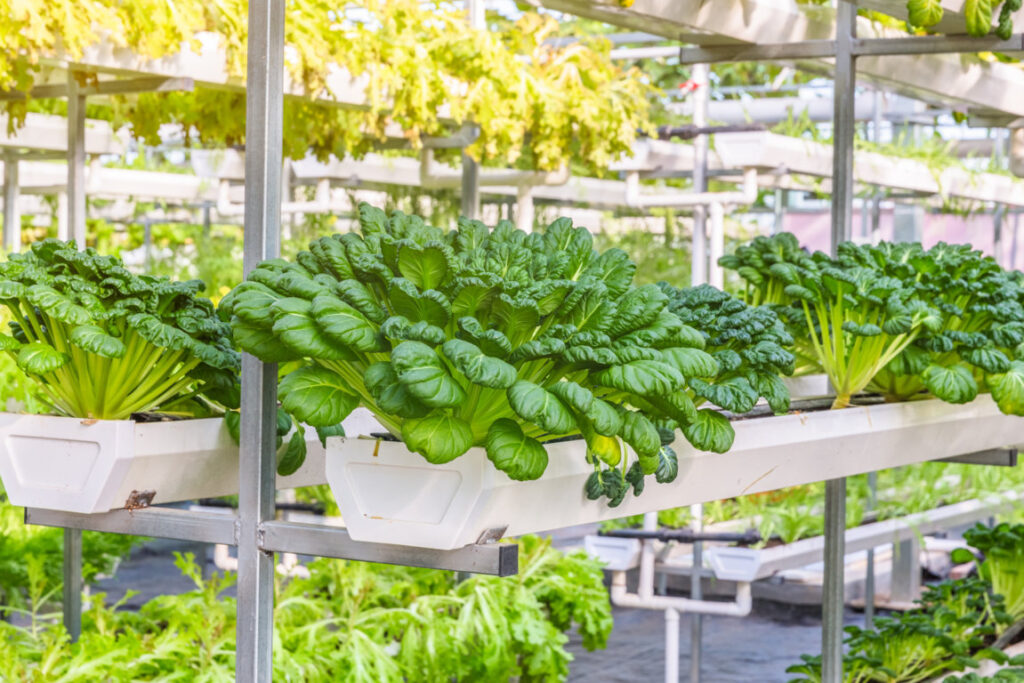
Rising environmental concerns and the growing demand for high-quality food, especially in urban areas are fueling the popularity of rooftop gardens.
These gardens transform underutilized roof spaces into vibrant, productive green areas. However, maintaining healthy plant life on a rooftop presents unique challenges, particularly when it comes to irrigation.
Traditional irrigation systems are often inefficient and impractical for elevated gardens. Fortunately, specialized systems have emerged, each with its own pros and cons.
In this post, we’ll explore some of the best irrigation systems for rooftop gardens, highlighting their key features and suitability for different settings.
Drip irrigation

One of the most popular and widely used methods for rooftop gardens is drip irrigation.
In the Drip irrigation system, water is delivered through a thin tube; the small openings have emitters for delivering water in a controlled manner.
Emitters that slowly release water directly to the root zones of plants. This targeted delivery minimizes water waste through evaporation or runoff, making drip irrigation particularly well-suited for water-conscious urban environments.
A major advantage of drip irrigation is its ability to be tailored to the specific layout and plant needs of a rooftop garden. Emitters can be strategically placed to provide the right water flow for each plant, considering factors like plant size, sun exposure, and soil type.
You can also use modern sensors and smart controllers with the system to further increase efficiency.
However, maintenance of the system is the major drawback. You have to check the tubing, emitters, and water sources to prevent clogging and ensure proper water distribution. The emitters and tubing can become blocked by mineral buildup or debris, necessitating periodic flushing and cleaning.
Micro Spray Solutions
Micro Spray irrigation systems like soaker hoses, automated sprinklers, and water containers are well suitable for rooftop gardens.
Soaker Hoses
Soaker hoses are an alternative to the drip Watering Wisely: Best Practices for Low-Pressure Irrigation of Delicate Plantssystem. Instead of having holes to deliver the water, the entire pipe is porous, releasing water slowly and evenly at low pressure.
You can move the soaker hose easily around just like garden hoses, and adjust it to the desired length and shape.
Make sure to clean the hose often because it prevents clogging.
Micro Sprinklers
Micro sprinklers have a low coverage area and come in different shapes, size.
These sprinklers are suitable for the densely planted or delicate plants.
You can choose the shape and size of the sprinkler and also can automate the sprinkler irrigation using the smart controllers.
Self-Watering Containers
These innovative containers reduce evaporation transpiration and bring a self-sufficient solution for rooftop gardens.
Self-watering containers have a reservoir that holds the excess water and allows the plants to draw up the water as needed.
The design of these containers ensures proper plant hydration and is perfect for people with busy schedules.
Capillary Mat System
The Capillary Mat System uses a porous fabric mat that contacts the bottom of the garden bed to deliver water.
This mat is connected to a water source, typically a reservoir or tank, which can be filled manually or automatically. As a porous mat absorbs the water from the reservoir, it creates a constant upward flow of moisture through the growing medium, ensuring that plant roots have access to water from below.
The Capillary Mat system is the best for shallow planting beds, like if you’re growing plants on pots, but not practical for larger or deeper rooftop gardens.
Capillary Mat Systems are highly water-efficient, minimizing evaporative losses and eliminating the potential for runoff or overspray. They provide a consistent, uniform moisture level throughout the growing medium, reducing the risk of over- or under-watering.
Rainwater Harvesting Systems
Storing rainwater for your rooftop garden is the best irrigation choice for urban areas with sufficient rainfall. It’s also cost-effective compared to relying on expensive municipal water.
Rainwater harvesting is a simple system to collect and store rainwater from the roof or other surfaces, channeling it into storage tanks or cisterns for later use.
If you are growing sensitive plants, rainwater is the best choice because it is free of chemicals and minerals.
However, keep in mind that rainwater harvesting systems are dependent on local rainfall patterns and the available catchment area. In arid or drought-prone regions, rainwater harvesting may not provide a reliable or sufficient water source for irrigation needs.
Additionally, these systems require proper filtration and treatment to remove contaminants and prevent the growth of harmful bacteria or algae in the stored water.
Hydroponic System

If you have a small space for growing plants, then a hydroponic system is perfect for you.
In a hydroponic system, plants are grown without soil, with their roots suspended in a nutrient-rich water solution or an inert growing medium.
To put it simply, plants are grown in a pipe-like structure that is filled with nutrition-rich water without any soil. This method reduces water consumption by recirculating and reusing the nutrient solution.
Plus, hydroponic systems can be designed to be highly space-efficient, making them well-suited for compact rooftop spaces.
However, hydroponic systems may not be suitable for all plant varieties, as some species might struggle in a soilless environment. They also require a higher level of technical expertise and maintenance than other irrigation methods. This often involves specialized equipment like pumps, timers, and nutrient reservoirs, which can increase the complexity and cost of setup.
Choosing the Right Irrigation System
In urban areas, space is gaining more importance, making it hard to find empty land for agricultural activity or gardening. The solution is Rooftop Gardening.
Before starting a rooftop garden, collaborating with experienced professionals, such as landscape architects, horticulturists, or irrigation specialists, can help ensure that the chosen irrigation system is optimally designed and installed for your specific needs.
By understanding the various irrigation options available for rooftop gardens, gardeners and urban planners can make informed decisions that balance plant health, water conservation, and long-term viability.
Last Words…
As urban spaces grow denser and land prices rise, rooftop gardens offer a practical solution for maintaining green environments.
However, to thrive, these gardens require efficient and reliable irrigation systems.
The systems listed above offer various benefits and challenges.
Before choosing one, carefully consider the specific requirements of your rooftop garden, weigh the pros and cons, and think about factors such as water availability, garden size, maintenance capacity, and cost.
A well-chosen irrigation system can ensure the success and sustainability of your rooftop garden for years to come.

Leave a Reply